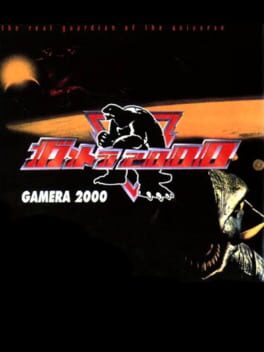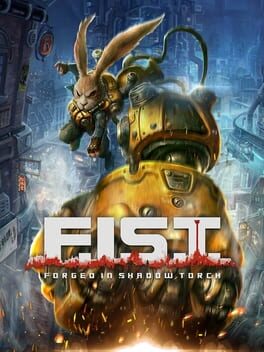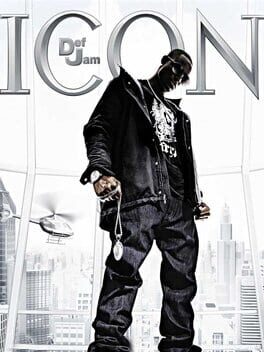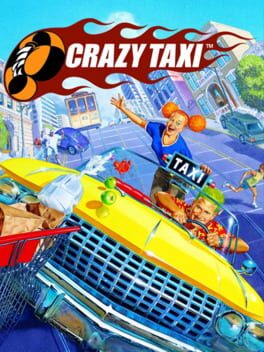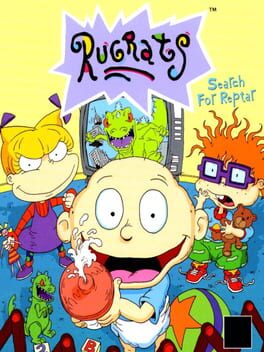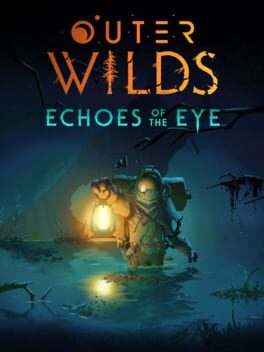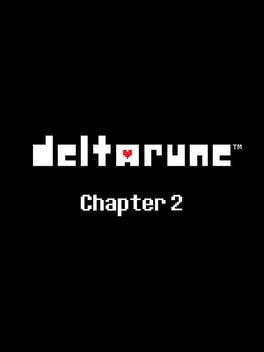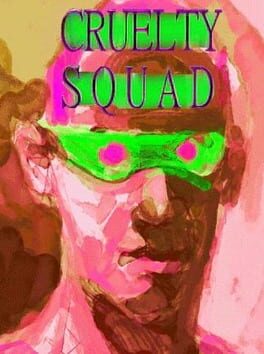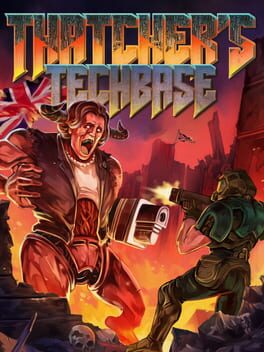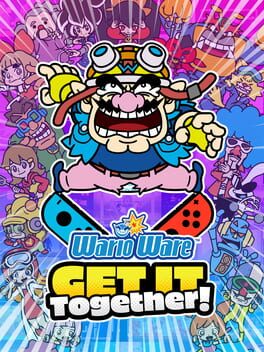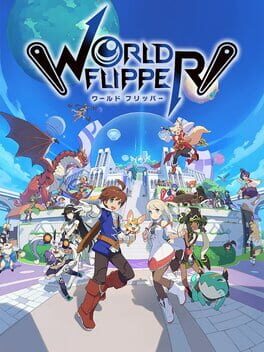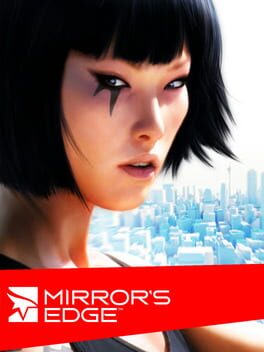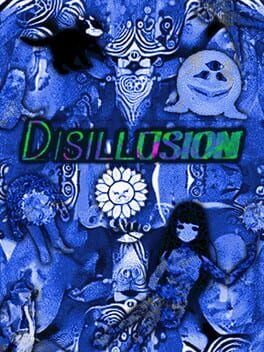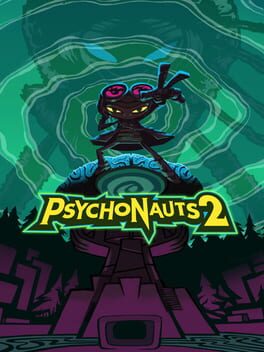BeachEpisode
1997
F.I.S.T. has been brought to us with the aid of "China Hero Project", Sony’s big initiative to help fund small indie devs based in and around China in order to help bring their games to a more global stage, and to more platforms. An exciting little prospect for me, as I've always wanted to see some decently-backed singleplayer entries to come out of China.
Honestly I kind of love this game, despite a few shortcomings by way of bizarre difficulty spikes, somewhat bloated playtime, poor localisation, it all feels palpably ambitious and filled with heartfelt detail! A Brawler Metroidvania with a wide array of combat and movement abilities that feel gr8, and everything from bosses to projectiles are parryable if you can react fast enough, which is my personal catnip.
Lovely furry-noire setting with vibes immaculate. The locales being widely varied and stunningly realised lent the city a lived-in feeling I tend to only yearn for in this genre. It's all very endearing!
Honestly I kind of love this game, despite a few shortcomings by way of bizarre difficulty spikes, somewhat bloated playtime, poor localisation, it all feels palpably ambitious and filled with heartfelt detail! A Brawler Metroidvania with a wide array of combat and movement abilities that feel gr8, and everything from bosses to projectiles are parryable if you can react fast enough, which is my personal catnip.
Lovely furry-noire setting with vibes immaculate. The locales being widely varied and stunningly realised lent the city a lived-in feeling I tend to only yearn for in this genre. It's all very endearing!
2007
1999
Heartwrenching scenes as I candidly showed dear and trusted friends the most frightening and blood-curdling sequences in this game. The parts that torture me even to this day, hoping companionship will finally bring me to overcome the fears that cling to me like a dying lover. Only to be Mocked. The light in my icy refridgidator of a heart - permanently extinguished, by Cancel Culture.
This review contains spoilers
Echoes of the Eye seems kind of like a square peg, round hole situation, to be honest. They wanted to tell this story about owl matrix and a prisoner, but had to fit it into the confines of the game they had already designed, and I dont think it worked.
I need to get more objective distance from it, but letting it sit with me so far, I think I Intensely Dislike the DLC, which I feel has nearly none of the elements that I liked about the base game. I just kinda wish I could forget I ever played it, and not so that I could play it again fresh like I wish I could do with the rest of the game. The initial puzzle of figuring out what and where The Stranger is is fantastic and straight out of vanilla OW, as well as the first couple times around the track as you greedily explore the surface world. It’s incredibly atmospheric; even the dream world is full of great atmosphere. But unlike the base game, there’s zero substance to any of it. In the DLC for the archaeological simulator, you learn nothing about the people on The Stranger nor what they were about. Other than they’re spooky horror aliens that communicate entirely via homemade found footage horror movies and jack into a big VR simulation of an early 2010s Slenderman fangame that you need to scour to assemble a strategy guide for. The goal of the whole thing is to find three sacred cheat codes, all to release a dude who’ll play the theremin.
The biggest problem is that it feels like an entirely different game stapled on top of Outer Wilds. OW’s biggest strength is that all these disparate areas that operate according to their own rules are cohesively tied together by a common set of systems and mechanics that work everywhere. Except in the DLC area, where none of the tools from the base game do anything, not even your knowledge of how to move your character around because you spend hours of it outside your suit slowly walking around in the dark. Even your rumour board stays blank because there are no rumours to learn. One of those mechanics in the base game and a fantastic piece of design work are the quantum laws, which are so consistently applied in so many places that you can just organically pick them up via osmosis. There are a few places in there where they give an explicit lesson if you need a little help, but most people I’ve talked to seem to figure out and apply at least one of them on their own, and it makes you feel like a brain genius. Here, they super transparently try to recreate that with a set of rigid laws within such a confined scale that solutions feel arbitrary and are often found by repeatedly beating the same brick wall.
I need to get more objective distance from it, but letting it sit with me so far, I think I Intensely Dislike the DLC, which I feel has nearly none of the elements that I liked about the base game. I just kinda wish I could forget I ever played it, and not so that I could play it again fresh like I wish I could do with the rest of the game. The initial puzzle of figuring out what and where The Stranger is is fantastic and straight out of vanilla OW, as well as the first couple times around the track as you greedily explore the surface world. It’s incredibly atmospheric; even the dream world is full of great atmosphere. But unlike the base game, there’s zero substance to any of it. In the DLC for the archaeological simulator, you learn nothing about the people on The Stranger nor what they were about. Other than they’re spooky horror aliens that communicate entirely via homemade found footage horror movies and jack into a big VR simulation of an early 2010s Slenderman fangame that you need to scour to assemble a strategy guide for. The goal of the whole thing is to find three sacred cheat codes, all to release a dude who’ll play the theremin.
The biggest problem is that it feels like an entirely different game stapled on top of Outer Wilds. OW’s biggest strength is that all these disparate areas that operate according to their own rules are cohesively tied together by a common set of systems and mechanics that work everywhere. Except in the DLC area, where none of the tools from the base game do anything, not even your knowledge of how to move your character around because you spend hours of it outside your suit slowly walking around in the dark. Even your rumour board stays blank because there are no rumours to learn. One of those mechanics in the base game and a fantastic piece of design work are the quantum laws, which are so consistently applied in so many places that you can just organically pick them up via osmosis. There are a few places in there where they give an explicit lesson if you need a little help, but most people I’ve talked to seem to figure out and apply at least one of them on their own, and it makes you feel like a brain genius. Here, they super transparently try to recreate that with a set of rigid laws within such a confined scale that solutions feel arbitrary and are often found by repeatedly beating the same brick wall.
2021
This review contains spoilers
It’s early days yet, and Deltarune is far from complete - but no other demo has given me this much content for free, while still enticing with a banquet of utterly intriguing story hooks to speculate on over the coming years. That said, the bulk of this game really just felt like the motions of Undertale on repeat. Toby Fox is a truly multitalented artist, his grasp on how to create vibrant worlds that feel both lived-in and fulfilling to explore is second to none in this industry… but with so many “hallways of funny moments” connecting everything, it can feel like his range is a tad too narrow at times. Subjective af note here but the music just doesn’t bang remotely as hard either.
I must give credit to Chapter 2, specifically the knowledge of the Snowgrave run, for finally lending the improved Undertale combat more of a sense of purpose. Its added layer of party complexity genuinely adds a lot, both mechanically and thematically, and I find it utterly convincing within Deltarune’s metatextual thesis on autonomy, imprisonment and puppeteering. Queen is also the funniest character he’s written yet.
All I’ll really say is that the offering of Deltarune we’ve been given so far suggests far grander things on the horizon, and I’m utterly convinced it will explore them thoroughly. Excited to see where this goes, because if it sticks the landing, it will be very very special.
I must give credit to Chapter 2, specifically the knowledge of the Snowgrave run, for finally lending the improved Undertale combat more of a sense of purpose. Its added layer of party complexity genuinely adds a lot, both mechanically and thematically, and I find it utterly convincing within Deltarune’s metatextual thesis on autonomy, imprisonment and puppeteering. Queen is also the funniest character he’s written yet.
All I’ll really say is that the offering of Deltarune we’ve been given so far suggests far grander things on the horizon, and I’m utterly convinced it will explore them thoroughly. Excited to see where this goes, because if it sticks the landing, it will be very very special.
2021
2021
This feels like a 'your mileage may vary' thing, but the central character shuffle gimmick in Get It Together acts as too much of a setback for all of these microgames and bogs the variety down. The fact that every microgame has a redesign in mind for the character you're tackling it with is a very interesting quirk that works well on paper, but the game doesn't utilise it very well and typically makes the microgames feel a little too samey - you generally just have to make your character hit something or go from a to b. This probably could have been alleviated if the microgames had fixed characters, allowing the designers to go crazy within a specific control framework, but I'm not a professional game designer, like Wario.
2021
A scarecrow wearing very thin Dragalia Lost clothing and almost entirely propped up by its novel pinball combat gimmick. Boasts worse music, and somehow an even worse story. The tried and true grind loop blueprint returns, and looks very embarrassing when the skill arc is essentially flat and difficulty amounts to bloating boss health. Am I fuck clocking in to this every day, the gatcha doesn't even give you any 3D models.
2008
First replay since release! Quite glad I could shake the bugs out of my distant memories of this game being somewhere near perfect. The ways in which it's weird and frictional definitely give it some character, though. Mirror's Edge's campaign kicks off with relatively simple flow-state platforming that eases you into the control scheme with clearly signposted goals that offer a degree of player freedom which made the journey from A-to-B feel like my own. 'Runner Vision' is still a neat little gimmick as an outright replacement for waypoints and such, acting as both a diegetic and stylised way to subtly suggest to the player little tricks that they could be doing to nudge them in the right direction. Surprised to learn that the game really shines whenever a train is nearby; intense little segments that feel so fast n lethal they shredded years off my life.
It doesn't take particularly long for the game's priorities to shift to something more akin to the jumping puzzles in like, Half Life 1 or something? Often throwing you into very dense obstacle courses or industrial interiors that demand a surprisingly great deal of spatial reasoning. With Runner Vision dialling down the closer to the finale the game gets, I found myself having to stop and survey the area for anything resembling surfaces I've come to know are scalable. On one hand, it's alarmingly rare for a Triple-A title to demand such a thing from a player - but It becomes fairly clear at some point that the game has more or less forgotten the thrill of scaling rooftops and communal areas in an unbroken sprint. A handful of areas feel downright lazy however, I don't demand that a game's world caters itself to the player's moveset, but it becomes fairly apparent that Faith loses her place at points - namely the ship and carpark shootouts which are neither visually interesting or engaging to navigate. Oftentimes you're thrown into a dense warehouse area filled with props and mezzanines that it becomes a game of finding the red door of progression.
All well and good, I don't really mind all of those temporary roadblocks much. I've even had quite a bit of fun looking up speedrun tech and going back through chapters just to absolutely crush them. The kickglitch makes you feel like you're in the fuckin Matrix or something. One of my biggest gripes is honestly that the game is absolutely gorgeo, but it really doesn't want you to appreciate it. Stand still and admire the view, the incredible lighting and texture work that wouldn't look out of place in the current-gen game roster, and a squad of armed feds will eventually come and pepper you down. You can't just put Nvidia PhysX Technology into your game and not let me fuck around with the curtains.
It doesn't take particularly long for the game's priorities to shift to something more akin to the jumping puzzles in like, Half Life 1 or something? Often throwing you into very dense obstacle courses or industrial interiors that demand a surprisingly great deal of spatial reasoning. With Runner Vision dialling down the closer to the finale the game gets, I found myself having to stop and survey the area for anything resembling surfaces I've come to know are scalable. On one hand, it's alarmingly rare for a Triple-A title to demand such a thing from a player - but It becomes fairly clear at some point that the game has more or less forgotten the thrill of scaling rooftops and communal areas in an unbroken sprint. A handful of areas feel downright lazy however, I don't demand that a game's world caters itself to the player's moveset, but it becomes fairly apparent that Faith loses her place at points - namely the ship and carpark shootouts which are neither visually interesting or engaging to navigate. Oftentimes you're thrown into a dense warehouse area filled with props and mezzanines that it becomes a game of finding the red door of progression.
All well and good, I don't really mind all of those temporary roadblocks much. I've even had quite a bit of fun looking up speedrun tech and going back through chapters just to absolutely crush them. The kickglitch makes you feel like you're in the fuckin Matrix or something. One of my biggest gripes is honestly that the game is absolutely gorgeo, but it really doesn't want you to appreciate it. Stand still and admire the view, the incredible lighting and texture work that wouldn't look out of place in the current-gen game roster, and a squad of armed feds will eventually come and pepper you down. You can't just put Nvidia PhysX Technology into your game and not let me fuck around with the curtains.
2004
Wish I enjoyed this more. Starts with a fun premise hilariously executed with surprisingly good firefighting action, but as the drawn-out chapters continue it's only made increasingly clear the game is spinning its wheels.
I'd wholeheartedly say this is worth a shot if you have a curious inclination, at the least, the first few chapters are very fun and bookended with some primo Konami presentation and PS2-era Hollywood imitation melodrama. The gameplay loop is great, there's a strong arcadey slant to the scoring and level structure which adds a hurriedness to things. Host to many legitimately inspired setpieces and bosses that exploit conventional locales for surprisingly effective sequences. One of my favourite bosses is literally just, "a fire in a locker room" because of how well its executed lol. Lockers bursting open with flaming clothes flying at the player in the form of projectiles.
By the time you get to the chemical plant, just bounce, that's when the creative spark has effectively been extinguished.
https://cdn.discordapp.com/attachments/624717617999118349/884823876910080092/huehuheu.mp4
I'd wholeheartedly say this is worth a shot if you have a curious inclination, at the least, the first few chapters are very fun and bookended with some primo Konami presentation and PS2-era Hollywood imitation melodrama. The gameplay loop is great, there's a strong arcadey slant to the scoring and level structure which adds a hurriedness to things. Host to many legitimately inspired setpieces and bosses that exploit conventional locales for surprisingly effective sequences. One of my favourite bosses is literally just, "a fire in a locker room" because of how well its executed lol. Lockers bursting open with flaming clothes flying at the player in the form of projectiles.
By the time you get to the chemical plant, just bounce, that's when the creative spark has effectively been extinguished.
https://cdn.discordapp.com/attachments/624717617999118349/884823876910080092/huehuheu.mp4
2021
2021
Mascot character platformers are one of the most exciting genres in gaming to me. They have the potential to be an intriguing concoction of every visual, aural and story element that normally goes into games, but benefit strongly from their bend towards the main controllable character being the mechanical focus. Characters like Rayman, Ratchet & Clank, Hat Kid, their games are informed by their personalities and rulesets in a way that contextualises the player’s involvement in their worlds. Conceptualised well enough, the degree of exploration and interaction afforded to the characters can elevate these titles to surprising degrees, and give them a unique voice with a sense that they really have something to say.
This is pretty much where Psychonauts comes in. The first game came about in the full swing of the mascot platformer craze of the 00’s - and with the help of Double Fine’s history in sharp character writing and adventure exploration, concocted a game where the themes are both broad and accessible: Psychics exist and can explore people’s mental planes to empathise with visualisations of their own unique psychological issues.
Part of my adoration for the first Psychonauts comes from its strong visual direction, with off-beat and illustrative takes on individual character’s mindscapes. Psychonauts goes above and beyond with its core concepts by allowing its cast to express themselves through clever writing and impressionistic environmental caricature. Likely inspired by Rankin Bass stop motion movies and the artwork of Tim Burton, who’s styling has roots in ideas of eccentrism, depression and nonconformity - as well as have a level of cheeky humour that complements its attempts to depict darker themes. It sets the perfect stage for what Psychonauts is setting out to do; to let its cast express themselves in unique and personal ways of which the player is tasked with physically navigating, a visual metaphor for the therapist and the client. All these abstractions never go too far into sheer chaos because they’re balanced wonderfully and grounded with stereotypical visual metaphors that help keep things grounded, like “censors”, “emotional baggage”.
Psychonauts 2 is great, I’m amazed that it not only delivered on its promise of being a follow-up to the original title, it also exceeded it in almost every aspect. My main complaints are that I simply didn’t find it anywhere near as laugh-out-loud funny, and that the climax is a little contrived to the point it simply wasn’t satisfying. One of the strengths of the original was the level of interaction you had with the world in the form of use-items and environmental objects, and character count… something Psychonauts 2 seems to have made an effort on trimming down. I think a lot of my disappointment in the humour of this game stems from how little there is to reveal, by comparison? Still, it’s a fun story to see unfold - I’m hugely fond of how there is a throughline across the levels in the form of a kind of shared trauma within the cast.
This is simply one of the best looking games I’ve ever seen from a technical standpoint. Uses, and masters every trick in the Unreal Engine book while also inventing new ones. Unbelievable work with gravity tricks, false scale, shaders and portals. Every area is simply stunning. I can’t believe how good it looks. Oh my god. Platforming feels wonderful and mercifully there’s an easy mode for the less-than-stellar combat.
This review feels bad to me so I'll just end it here.
This is pretty much where Psychonauts comes in. The first game came about in the full swing of the mascot platformer craze of the 00’s - and with the help of Double Fine’s history in sharp character writing and adventure exploration, concocted a game where the themes are both broad and accessible: Psychics exist and can explore people’s mental planes to empathise with visualisations of their own unique psychological issues.
Part of my adoration for the first Psychonauts comes from its strong visual direction, with off-beat and illustrative takes on individual character’s mindscapes. Psychonauts goes above and beyond with its core concepts by allowing its cast to express themselves through clever writing and impressionistic environmental caricature. Likely inspired by Rankin Bass stop motion movies and the artwork of Tim Burton, who’s styling has roots in ideas of eccentrism, depression and nonconformity - as well as have a level of cheeky humour that complements its attempts to depict darker themes. It sets the perfect stage for what Psychonauts is setting out to do; to let its cast express themselves in unique and personal ways of which the player is tasked with physically navigating, a visual metaphor for the therapist and the client. All these abstractions never go too far into sheer chaos because they’re balanced wonderfully and grounded with stereotypical visual metaphors that help keep things grounded, like “censors”, “emotional baggage”.
Psychonauts 2 is great, I’m amazed that it not only delivered on its promise of being a follow-up to the original title, it also exceeded it in almost every aspect. My main complaints are that I simply didn’t find it anywhere near as laugh-out-loud funny, and that the climax is a little contrived to the point it simply wasn’t satisfying. One of the strengths of the original was the level of interaction you had with the world in the form of use-items and environmental objects, and character count… something Psychonauts 2 seems to have made an effort on trimming down. I think a lot of my disappointment in the humour of this game stems from how little there is to reveal, by comparison? Still, it’s a fun story to see unfold - I’m hugely fond of how there is a throughline across the levels in the form of a kind of shared trauma within the cast.
This is simply one of the best looking games I’ve ever seen from a technical standpoint. Uses, and masters every trick in the Unreal Engine book while also inventing new ones. Unbelievable work with gravity tricks, false scale, shaders and portals. Every area is simply stunning. I can’t believe how good it looks. Oh my god. Platforming feels wonderful and mercifully there’s an easy mode for the less-than-stellar combat.
This review feels bad to me so I'll just end it here.
